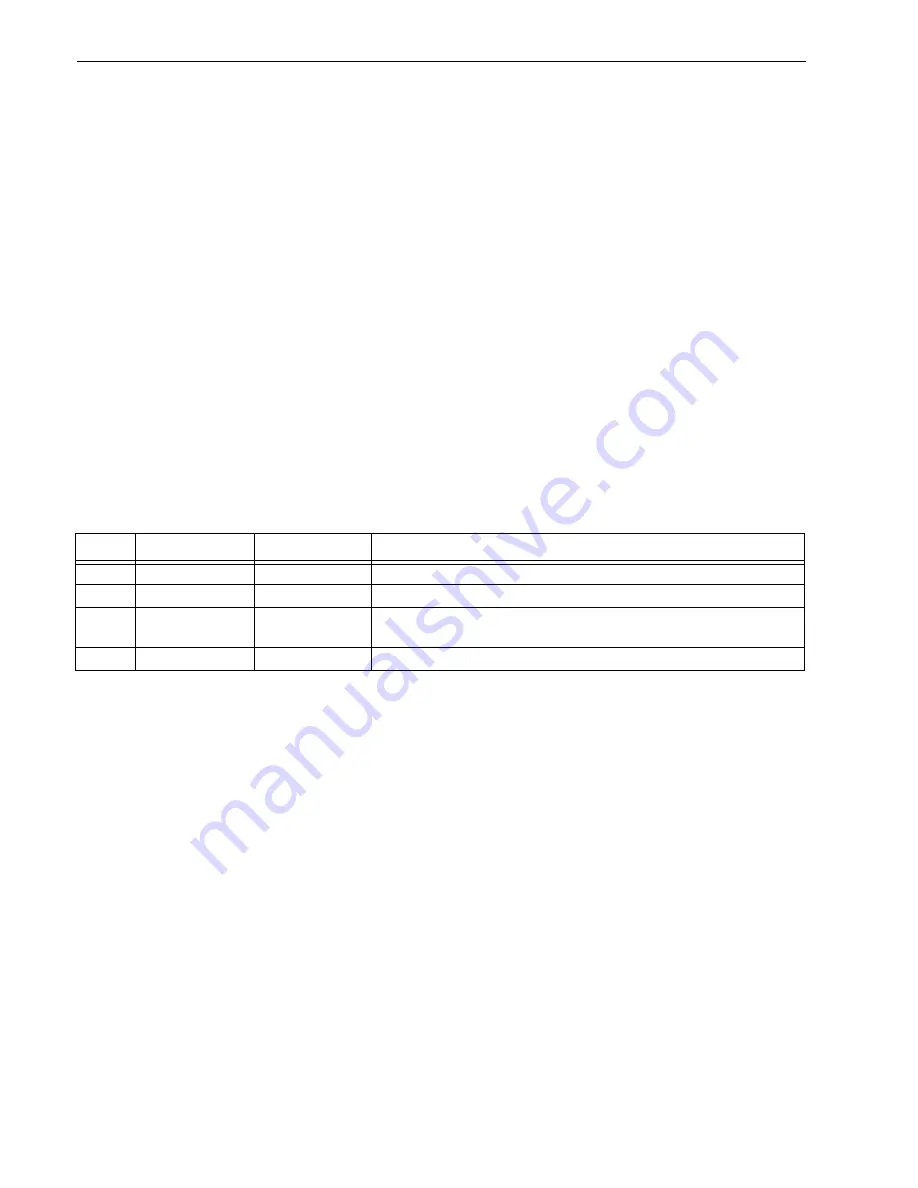
50
Barracuda 18FC Product Manual, Rev. B
9.5.9
Enable port bypass signals
The – Enable Bypass Port A (– EN BYP Port A ) and – Enable Bypass Port B (– EN BYP Port B) signals control
the port bypass circuits (PBC) located external to the disc drive. The PBC allows a loop to remain functional in
the event of a drive failure or removal. When these signals are active, low, the PBC bypasses the drive on the
associated port. When an Enable Bypass signal is active, the corresponding Port Bypass LED signal in con-
nector J1 is driven low by the disc drive. A pull down resistor, 1K, located with the PBC should be used to
insure the bypass is enabled if the disc drive is not installed.
The Enable Bypass signal is active under failing conditions within the drive, on detection of the Loop Port
Bypass primitive sequence, or on removal of the drive. In the bypass state the drive continues to receive on the
inbound fibre. Enable Bypass may be deactivated by detection of a Loop Port Enable primitive sequence if the
drive has completed self-test and a hardware failure is not present.
Failure modes detected by the disc drive that will enable bypass include:
• Transmitter/receiver wrap test failure
• Loss of receive clock
• Loss of transmission clock
• Drive interface hardware error
9.5.10
Motor start controls
The drive’s motor is started according to the Start_1 and Start_2 signals described in Table 20. The state of
these signals can be wired into the backplane socket or driven by logic on the backplane.
9.5.11
SEL_6 through SEL_0 ID lines
The SEL_6 through SEL_0 ID lines determine drive address, and, optionally, can be used for an Enclosure
Services Interface (ESI). When the Parallel ESI line is high, the enclosure backpanel must provide address
information on the SEL line. Refer to Table 21 for a mapping of SEL to FC-AL physical addresses (AL_PA). You
can think of the SEL lines as the equivalent of a backpanel logic plug. The drives does not provide pull up resis-
tors on these lines. The backpanel is required to provide high and low inputs to the SEL_ID lines per the spec-
ifications in Table 22 on page 52.
Note.
Table 21 gives AL_PA values for each SEL value. The first entry in the table is SEL_ID 00. The last
entry is SEL_ID 7D. SEL_ID 7E is AL_PA 00 which is not valid for an NL_Port, so is not included in the
table. Also, SEL_ID 7Fh does map to a valid AL_PA; however this value signals the drive that physical
addresses are not being assigned using the SEL lines and that a “soft” address will be determined by
FC-AL loop initialization.
When the Parallel ESI line is low, the enclosure backpanel logic switches to ESI mode if supported. There are
two modes of ESI, seven bits of enclosure status and a bidirectional mode. ESI support and the mode are
determined by the drive using a discovery process. Refer to the
Fibre Channel Interface Manual
for a descrip-
tion of ESI operation.
9.5.11.1
Parallel Enclosure Services Interface (ESI)
The parallel ESI line is an output from the drive. This line provides the enclosure with an indication of the
present function of the SEL lines. A high level, the default state, indicates the drive requires address informa-
tion on the SEL lines. A low level indicates the drive is attempting an ESI transfer. The enclosure may not sup-
port ESI on any or all drive locations. It may only support the address function. Support of ESI is discovered by
the drive. Refer to the
Fibre Channel Interface Manual
for a description of ESI operations
Table 20:
Motor start control signals
Case
Start_2
Start_1
Motor spin function
1
Low
Low
Motor spins up at DC power on.
2
High
Low
Motor spins up only when SCSI Start command is received.
3
Low
High
Motor spins up after a delay of 12 seconds times the modulo 8 value of
the numeric SEL ID of the drive from DC power on.
4
High
High
The drive will not spin up.
Summary of Contents for Barracuda 18FC ST118273FC
Page 1: ... Barracuda 18FC Disc Drive ST118273FC Product Manual Volume 1 ...
Page 2: ......
Page 3: ... Barracuda 18FC Disc Drive ST118273FC Product Manual Volume 1 ...
Page 6: ......
Page 10: ......
Page 12: ......
Page 18: ......
Page 28: ......
Page 34: ......
Page 42: ......
Page 64: ......
Page 68: ......
Page 75: ......
















































